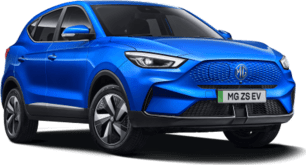The steering wheel only has height adjustment, which is notable given that most ute rivals have height and reach adjustment. Even so, the driving position offers ample headroom, a good-sized left footrest and, although lacking adjustable lumbar support, a comfortable and supportive seat.
It has good steering feel although we struggled to detect much difference between the various steering modes on offer. Unladen ride quality is firm and a bit jiggly on bumpy roads, but it’s no firmer than a HiLux and acceptable given its one-tonne-plus payload rating.
The engine is reasonably quiet and despite its relatively modest 120kW/410Nm outputs produces good acceleration when unladen, which we suspect is partly a result of its relatively light kerb weight.
However, there's a slight delay in response when using full throttle from standing starts, which feels like turbo lag. However, the response is fine when applying the accelerator with less aggression, so some refinement in this area would be beneficial.
Selecting the Sport mode in the smooth-shifting eight-speed (ZF-sourced) automatic alters the shift calibrations to provide the most eager response. It also displays helpful ‘intelligence’ by automatically downshifting to assist with engine-braking when the driver applies the brakes on descents.
To test its GVM rating we forklifted 890kg into the load tub, which with driver equalled a payload of 980kg that was just under its 1045kg limit. The rear leaf-springs compressed about 60mm yet there was still about 60mm of static bump-stop clearance remaining, which was ample to ensure no bottoming-out on our test route.
It competently hauled this payload around town and proved equally comfortable at highway speeds, where the engine required just under 2000rpm to maintain 110km/h which was right in the middle of its peak torque band.
The adaptive cruise control, which only adjusts in 5.0km/h increments, maintained the set speeds with discipline. However, on some uphill gradients (in cruise control mode) the transmission would rapidly shift between the sixth and seventh gears numerous times before deciding which was the correct ratio.
Even so, it made light work of our 13 per cent gradient, 2.0km-long set climb at 60km/h, decisively downshifting to fourth gear and 2500rpm to easily haul this load to the summit.
We were also genuinely surprised by its powerful engine-braking on the way down. In a manually-selected second gear, it never exceeded the posted 60km/h limit on overrun, with almost one tonne of payload to restrain and no use of the brake pedal.
It was the strongest engine-braking we’ve experienced from a 2.0-litre turbo-diesel on this descent (in either ute or van) which would be most useful when hauling heavy loads, particularly in hilly terrain.
Our only major gripe is the overly sensitive driver attention monitor located at the base of the driver’s windscreen pillar, which ensures you’re directly in the firing line for constant prompts to ‘please focus on driving’ even though you are doing just that.
Such technology, with constant nagging from audible and visual warnings designed to save us from ourselves, is well intentioned. However, if its questionable judgement of what represents driver inattention is so annoying that it becomes distracting, then it defeats the whole purpose.






